Uphill working will be an absolute pleasure—if you happen to practice proper. Whereas some runners love working hills greater than others, none of us are strangers to them! Hills are extremely helpful instruments in tackling working challenges, growing muscle power, and studying run correctly.
Should you’re like many of the TRE coaches, it’s just about unimaginable to get via a coaching run with out uphill working a good quantity of the time!
Operating uphill may really feel like a slog proper now, however we’ve got some tricks to rework your expertise transferring ahead. Beneath, we’ll make it easier to grasp uphill working method and be taught to like the incline.
The Advantages of Operating Uphill
Hill working exercises are glorious for bettering working posture and endurance, particularly after we run them quick and quick (also called hill sprints). Right here a just some of the numerous advantages of hill working:
- Hill working is a superb introduction to hurry work. The minimal impact and freedom of motion we expertise throughout uphill working act as stepping stones to pure speedwork down the highway.
- Operating uphill makes use of completely different muscle fibers than these recruited when working on flat surfaces. Our fast-twitch muscle fibers are referred to as on to energy us up steep hills, and coaching these particular muscle fibers helps us develop endurance as runners.
- Hill working teaches us run accurately by “fixing” many mechanical faults we see on flat floor, resembling over-striding, over-rotation, sluggish cadence, extreme heel-striking, and extra.
Learn on for 3 fast hill working suggestions that may make working simpler–and may help you turn out to be a stronger, extra environment friendly runner!
Tips on how to Run Uphill: 3 Hill Operating Ideas
Uphill Operating Tip #1: Keep Tall on the Hills
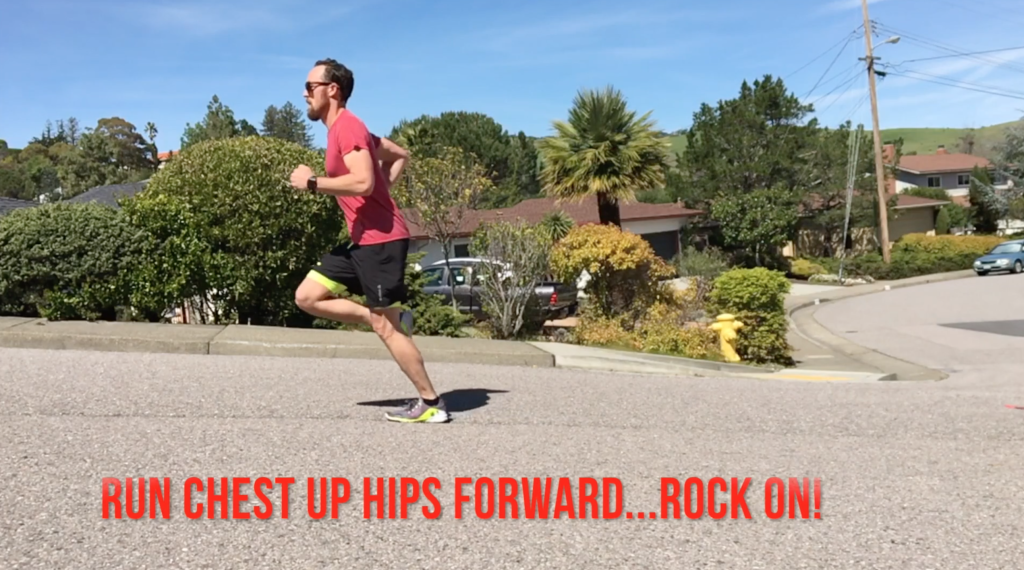
One important tendency we see in hill working is poor posture, notably within the hips.
Because the slope of a hill steepens, so does our notion of leaning ahead. We’re naturally inclined to cope with it by bending on the waist–as if reaching for one thing on the ground.
Bending over like this creates dangerous, pointless stress on our decrease backs. It additionally turns into harder for us to keep up full hip extension, robbing every stride of energy and effectivity.
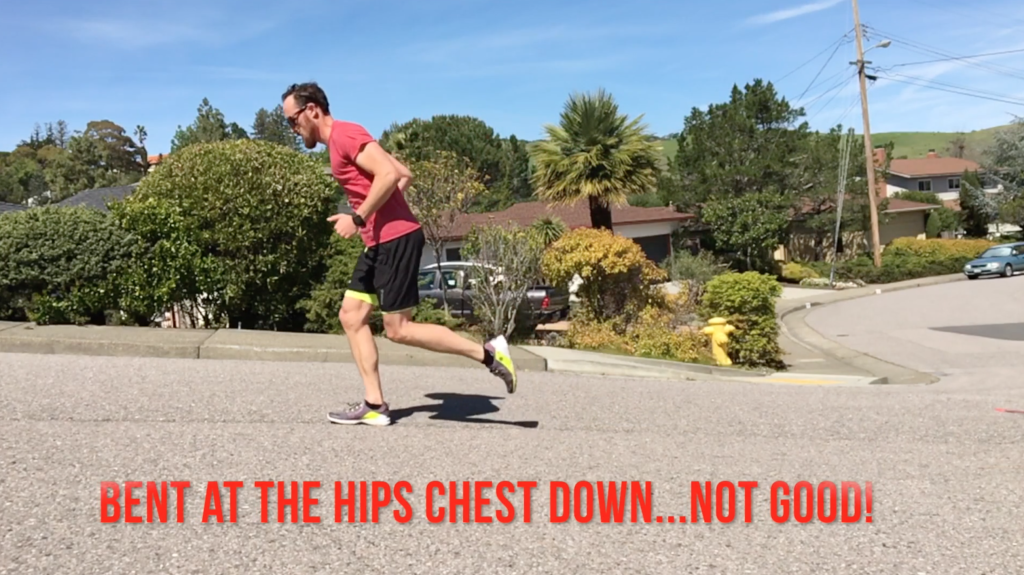
Now that you just’re conscious, let’s defend our decrease backs and enhance stride effectivity by training correct working type.
After all, there’s an “incline restrict” to our means to remain tall when working up notably steep hills. At a sure level, we are able to’t stay tall resulting from issues like ankle vary of movement, power, and steadiness. That being mentioned, staying as tall as potential at all times reaps large benefits.
When working uphill, keep tall–identical to we do on flat floor. I usually say, “hips into the hill” to assist runners deal with driving the hips ahead and avoiding bending over on the hips. It takes a variety of focus, however observe makes excellent!
Coaching Drill: Tall Hill Repeats
Do this train out as soon as every week throughout a coaching run to enhance your general working efficiency:
- Select a “runnable” hill–one with not more than a 5º incline.
- Jog in place to start out, establishing a tall working posture.
- Run up the hill for 30 seconds, continuously reminding your self to drive your hips into the hill.
- Stroll or jog again right down to your start line.
- Repeat 4 to 5 occasions and wrap up with a 10-minute stroll or jog to chill down.
Tip #2: Set a Fast Cadence
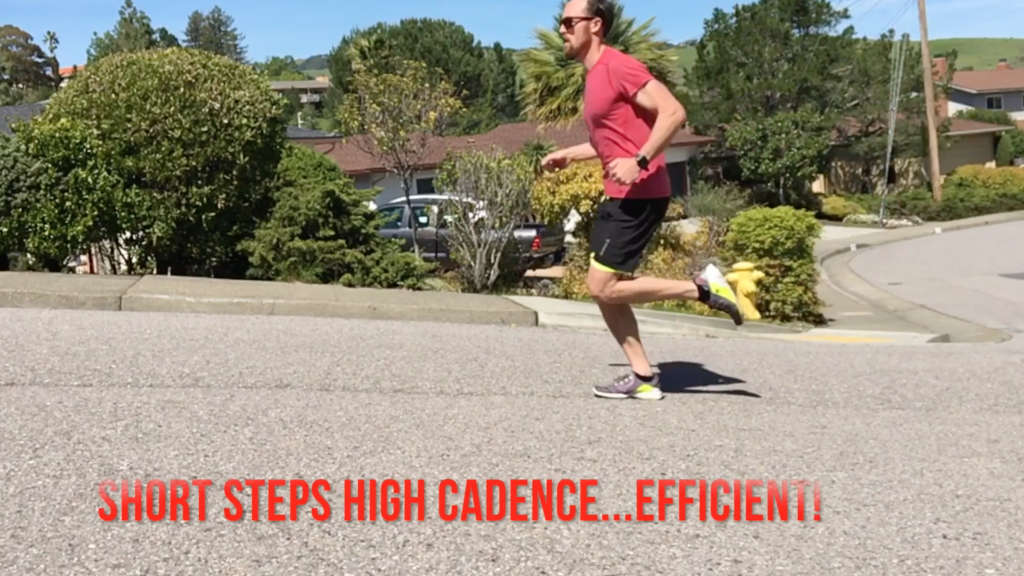
Basically, we advise folks to run with a cadence of round 90 steps per minute (spm). This helps restore many working type points resembling over-striding, a cool arm swing, over-rotating your torso, and extra.
Facet observe: Should you’re significantly taller or shorter than common, you could be a bit above or under 90spm. Moreover, newbie runners shouldn’t fear about hitting the goal the cadence goal proper off the bat. Give your self time and observe to craft your cadence!

The principle purpose with optimum cadence throughout hill working is sustaining 90spm. Since our stride size decreases resulting from slower speeds after we run up hills, 90spm will really feel significantly quicker than working on even terrain. Now we have to willingly undertake a shorter stride whereas working uphill.
Take a look at your stride cadence with this train. Over-stride your manner up a average hill. Actually certain on up with the longest steps you may take! You received’t have the ability to do it for lengthy as a result of it’s overwhelmingly tiring.
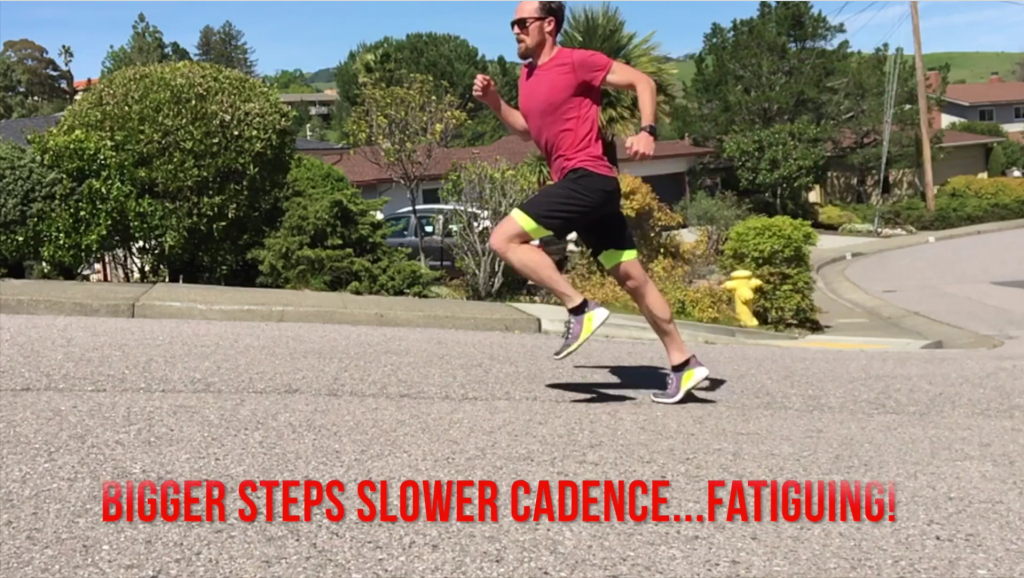
If we maintain the cadence as excessive as we do on flat surfaces, we are able to preserve a extra environment friendly rhythm not just for the hill sections, however for the whole thing of the run.
Coaching Drill: Cadence Particular Hill Repeats
Put this hill exercise into your working schedule to coach your self on preserve the appropriate cadence in your stride:
- Discover a “runnable” hill–one with not more than a 5º incline once more.
- On the base of the hill, run in place at a cadence of 85-90spm for about 20-30 seconds.
- Run up the hill whereas sustaining your rhythm. Depend your steps on one leg for 60 seconds–you need to depend about 85-90 steps.
- Stroll or jog right down to the bottom of the hill.
- Repeat 4 to 5 occasions, and end up with a 10-minute stroll or jog to chill down.
Professional tip: A metronome is a useful gizmo that helps you determine an optimum working cadence. Take a look at the MetroTimer app to make use of throughout your subsequent run.
Tip #3: Calm down These Ankles
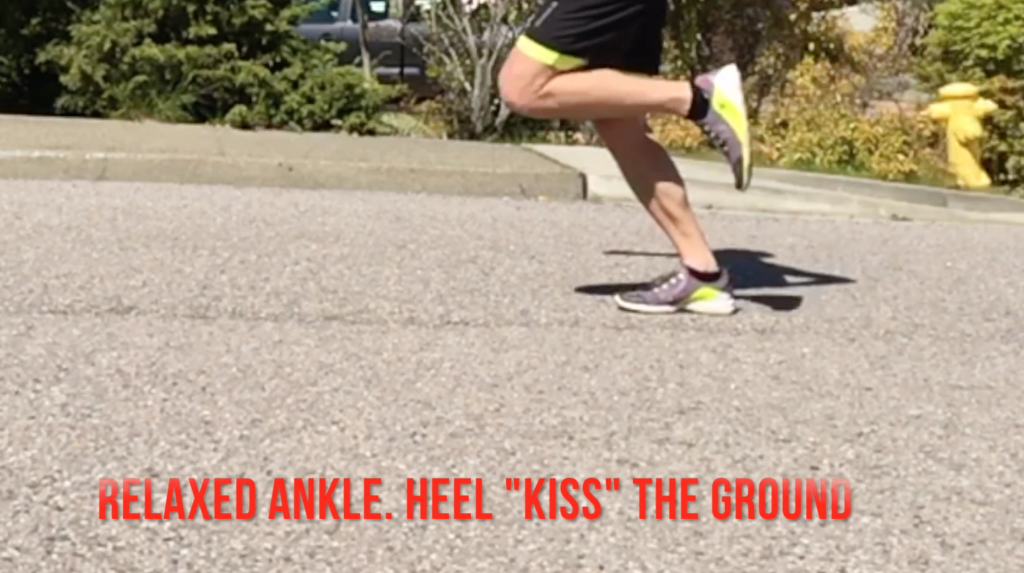
One factor that involves thoughts when speaking about hill working is lifted calves. Whereas it’s not utterly avoidable, we are able to undoubtedly make enhancements!
When working uphill, we usually must make use of a higher vary of movement in our ankles than we do on flat floor. If we lack this vary of movement–referred to as dorsiflexion–we’re pressured to run on our toes.
Don’t consider me? Right here’s a take a look at–you’re standing whereas studying this, proper? Push up onto your toes for the remainder of the article. Which muscle groups are working onerous to maintain you up there? That’s proper, you’re feeling the burn in your calves. Should you run like this constantly, you’ll find yourself with strained or injured calves–and may get up in the midst of the night time to painful “charlie horses!”
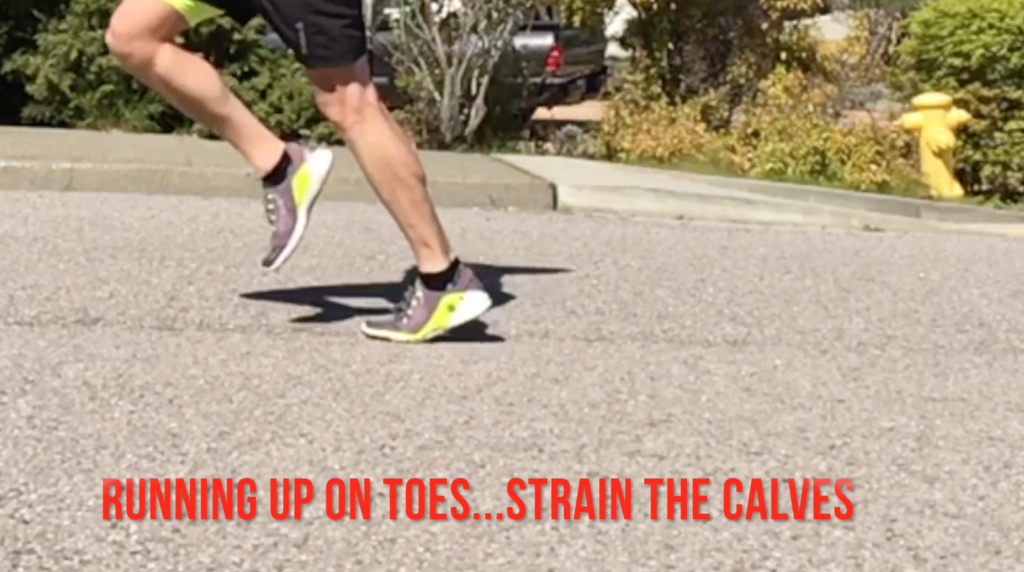
To scale back the pressure in your calves, be sure your heels evenly kiss the bottom with each step. The “heel-kiss” saves your calves in your stride and prevents the disagreeable calf meltdown disaster.
Fearful about heel hanging? Because the hill will get steeper, the chance of overstriding and heel hanging will reduce. Go forward, attempt it out.
After all, there’s a spectrum of rest. We shouldn’t really feel loosey-goosey in our ankles. Nevertheless, enable a bit extra slack in your ankles–your decrease legs will thanks! Bear in mind: We’re aiming for a slight heel kiss.
Coaching Drill: The Heel Kiss
Incorporate this drill into your working plan to observe staying off your toes and defending your calves.
- Discover a “runnable” hill–one with not more than a 5º incline.
- Run up the hill 4 to 5 occasions for 60 seconds every, permitting your heel to evenly kiss the bottom with each step.
- Full your exercise with a 10-minute stroll or jog to chill down.
Observe: You probably have stiff ankles, this drill could also be tough. Nevertheless, that indicators a purple flag that your ankles want some mobility work.
Tip #4: Energy Up These Arms
We frequently overlook about our arms after we’re huffing and puffing up a hill, however they’re secret weapons for uphill working. Here is why:
Use a compact arm swing — Hold your elbows bent at about 90 levels and swing your arms out of your shoulders, not your elbows. This helps preserve your rhythm and propels you ahead extra effectively.
Match your arm pace to your leg turnover — As you enhance your cadence on the hills, be sure your arms are conserving tempo. This synchronization helps preserve your steadiness and momentum.
Drive these elbows again — Think about you are attempting to elbow somebody behind you. This backward movement helps counterbalance your ahead lean and offers you a bit of further oomph with every stride.
Bear in mind, your arms aren’t simply alongside for the journey — they’re an integral a part of your uphill working type. So pump these arms and watch your self energy up these inclines!
Tip #5: Grasp the Psychological Recreation
Let’s face it — hills will be intimidating. However half the battle is in your head. Here is deal with the psychological facet of uphill working:
Break it down — As an alternative of fixating on the complete hill, deal with attending to the subsequent lamppost or tree. These small victories add up and earlier than you understand it, you may be on the prime.
Use optimistic self-talk — Substitute “This hill is killing me” with “I am getting stronger with each step.” It would sound tacky, however it works!
Embrace the problem — Attempt to reframe hills as alternatives slightly than obstacles. Every hill is an opportunity to turn out to be a greater, stronger runner.
Your thoughts is a strong instrument. Practice it identical to you practice your physique, and you will find these hills turning into much less daunting with every run.
Tip #6: Observe Downhill Operating Too
We discuss so much about working uphill, however what goes up should come down. Mastering downhill working is essential for turning into a well-rounded hill runner. Here is why it issues:
Construct eccentric power — Downhill working strengthens your quads eccentrically, which may help forestall muscle harm throughout lengthy runs or races.
Enhance your general pace — Studying to run downhill effectively can shave seconds (and even minutes) off your race occasions.
Improve your steadiness and coordination — Navigating steep descents improves your proprioception and agility, making you a extra well-rounded runner.
When working downhill, lean barely ahead out of your ankles (not your waist), maintain your steps gentle and fast, and attempt to land midfoot slightly than in your heels.
Embrace the Ups With These Hill Operating Ideas
Operating uphill doesn’t should suck. With these hill working suggestions, you may be taught to grasp it—and sit up for it.
Ease into it a bit of bit at a time. Don’t got down to dash up a mountain this weekend. As an alternative, discover a good gradual hill to start out incorporating these hill working suggestions. When you’re comfy with that, discover a bit steeper of a hill.
Grasp uphill working method is comparatively easy, however it takes time to adapt and construct all of the muscle groups you want for sustained coaching and efficiency. Give your physique time to develop stronger.
Are you able to get essentially the most out of each run? Take a look at The Each day Run App designed for runners of each stage. You’ll uncover the sturdy toolkit filled with run packages, power workout routines, mobility actions, working strategies, and extra!
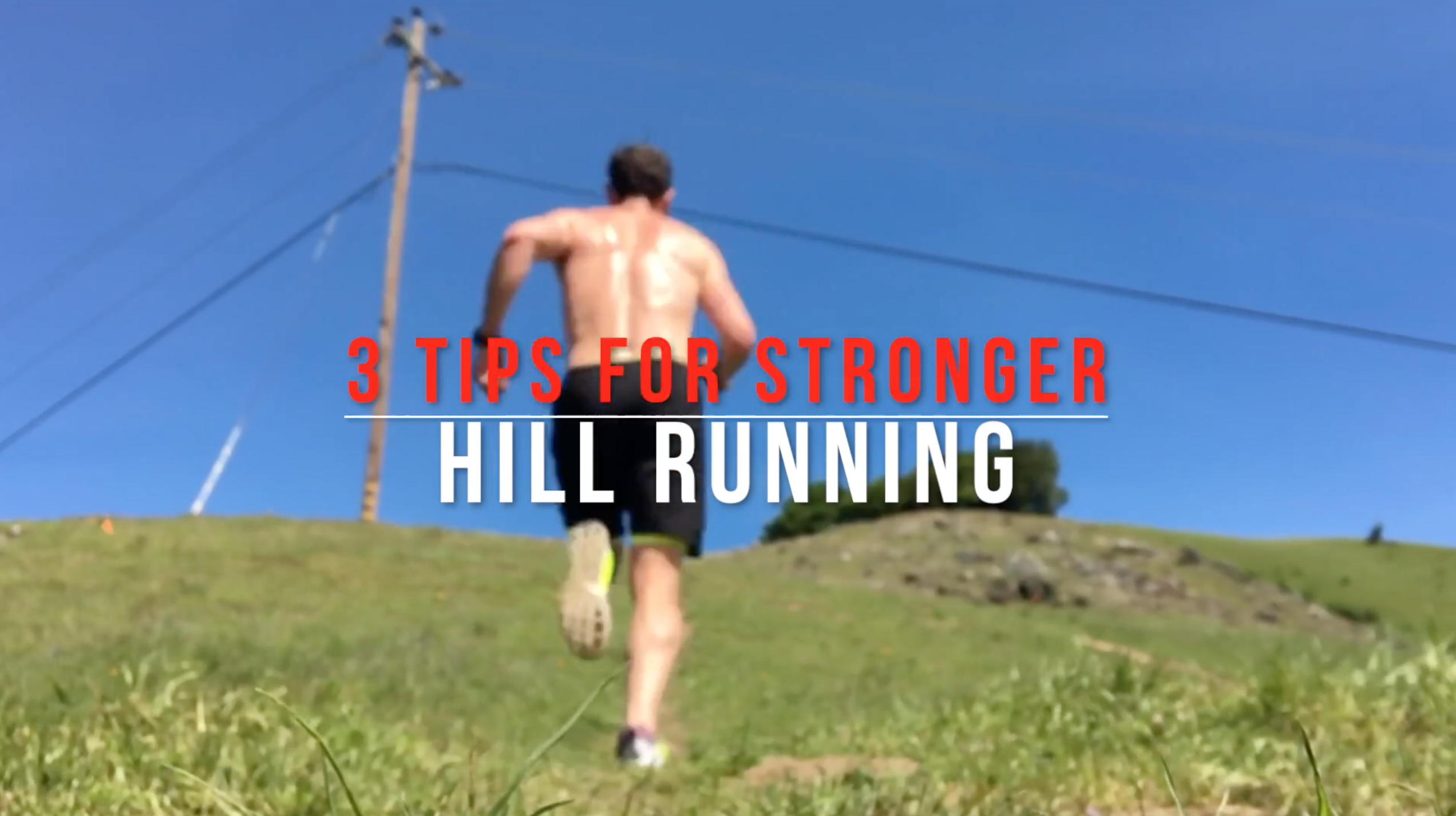
The tips provided here are quite useful for runners looking to improve their uphill performance. I appreciate the focus on posture and cadence.
I found the advice on maintaining a quick cadence while running uphill very insightful. It makes sense that it would help with efficiency.
The section about mental strategies for tackling hills is particularly interesting. Positive self-talk can really change the game.
I never thought about how important arm movement is while running uphill. This article gives a lot of good points to consider.
‘Heel-kiss’ technique sounds like a great drill to incorporate into training. I’ll definitely give it a try during my next run.